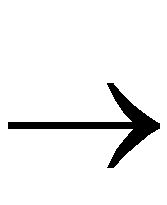Timing Analyzer GuideChapter 4: Using the Timing Analyzer
Querying for Information
You may want to focus on the source, destination, and timing of a particular net or time group. You can obtain information about the timing of particular nets or the members of a time group using the Query command. This command only applies to FPGAs; it is disabled if a CPLD design is open.
To perform a query, follow this procedure.
- Select Analyze
 Query.
Query.
The Query dialog box appears, as shown in the “Query Dialog Box” figure of the “Menu Commands” chapter.
- Select the subject of the query by clicking on Nets or TimeGroups. Nets is the default.
The following information is generated for each option.
- Nets - The Timing Analyzer shows the fanout, the timing from the source CLB to each of the destination CLBs, and the CLB names in the generated Query Nets Report.
- TimeGroups - The Timing Analyzer lists the elements in the specified timing groups in the generated Query TimeGroups Report.
The other fields in the dialog box change to Nets or TimeGroups with your selection.
- If you select Nets, enter a value in the Delay Greater Than field of the Filter for Available Nets/TimeGroups section, if desired. This field is disabled if you select TimeGroups.
The Delay Greater Than value specifies a minimum net delay in nanoseconds. The Timing Analyzer displays only those paths that have a delay greater than or equal to the specified value.
- Enter a filter in the other portion of the Filter for Available Nets/TimeGroups section, if desired, and click Apply.
If you enter a value in the Delay Greater Than and a filter in the filter field, the Timing Analyzer lists the nets that meet both criteria. See the “Using Filters with Commands” section of the “Getting Started” chapter for valid filter inputs.
- Select the nets or timing groups that you want to query from the Available Nets/TimeGroups list box and move specific ones or all of them to the Selected Nets/TimeGroups list box.
See the “Moving Items in List Boxes” section of the “Getting Started” chapter for details on selecting and moving items between list boxes.
- Click OK.
The Timing Analyzer displays the Query Nets/TimeGroups Report in a pop-up window, which can be saved as a TWR file. Nets/TimeGroups is Nets or TimeGroups, corresponding with your selection in step 2. See the “Saving a Report” section for the procedure to save a report.
Query Nets Report
The following is an example of Query Nets Report.
M-- $1N15 ................ $1I37.O................ 4.0 $1N6.F4
$1I45.O 4.0 $1N6.F4
--- $1N32 ................ C.I2................... 2.0 $1I45.T
2.0 $1N6.F3
--- $1N34 ................ D.I2................... 1.0 $1N6.F1
--- $1N6 ................. $1N6.X................. 1.0 O1.O
1.0 O2.O
--- $1N51 ................ A1.I2.................. 0.0 $1I45.I
--- $1N38 ................ B.I2................... 2.0 $1I37.T
--- $1N41 ................ A.I2................... 2.0 $1I37.I
The contents of the Query Nets Report example have been placed in the following table to illustrate the format of the report. Connections are listed by net, then by source; each is only listed once. Explanations of the information in Net Characteristics and Delay columns follow the table.
Table 4_1 Query Nets Report Format
Net Characteristics
| Net Name
| Driver Pin Name
| Delay Value
| Load Pin Name
|
|---|
M--
| $1N15
| $1I37.O
| 4.0
| $1N6.F4
|
|
| $1I45.O
| 4.0
| $1N6.F4
|
---
| $1N32
| C.I2
| 2.0
| $1I45.T
|
|
|
| 2.0
| $1N6.F3
|
---
| $1N34
| D.I2
| 1.0
| $1N6.F1
|
---
| $1N6
| $1N6.X
| 1.0
| O1.O
|
|
|
| 1.0
| O2.O
|
---
| $1N51
| A1.I2
| 0.0
| $1I45.I
|
---
| $1N38
| B.I2
| 2.0
| $1I37.T
|
---
| $1N41
| A.I2
| 2.0
| $1I37.I
|
Net Characteristics
The entries in the Net Characteristics column are comprised of three characters. The characters indicate aspects of the net(s) you query. Each character position is independent of the others. The character position and values of each position are illustrated in this table.
Left = Net Source
| Middle = Net Load
| Right = If Critical
|
|---|
S = No Source
| L = No Load
| C = Net marked with CRITICAL property in the design or Net PRI is >= 10
|
M = Multiple Sources
|
| - = Not Critical
|
Delay Value
The entries in the Delay Value column can include asterisks (*), question marks (?), or tildes (~).
- The pin is unrouted or one or both pins are not yet placed if three asterisks (***) appear as the delay value. An asterisk preceding a number, *3 for example, indicates the connection delay is estimated, if timing analysis is performed on an unrouted design. Because the Timing Analyzer can perform timing analysis on mapped FPGA designs, generating a Query Nets report can determine if a design does not meet timing requirements before a design is routed.
- A question mark (?) indicates the net was routed incorrectly.
- A tilde (~) preceding a delay value indicates that the delay value is approximate. The delay can be longer than estimated.
Query Time Groups Report
The Query Time Groups report lists the contents of each time group that you select. Time group information is also generated in the Timing Constraints Analysis report.